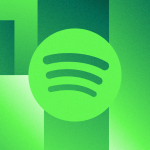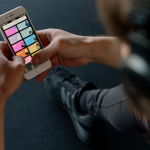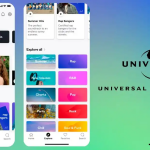The Superbowl is one of the most closely followed media events every year. The finale attracts millions of viewers (100 million on average) and at least as many commentators. It’s the most-watched television event in the United States. It culminates in the halftime show, which showcases one or more artists and can have great consequences. What is the Super Bowl’s impact on streaming numbers? We explain it all in this new article.
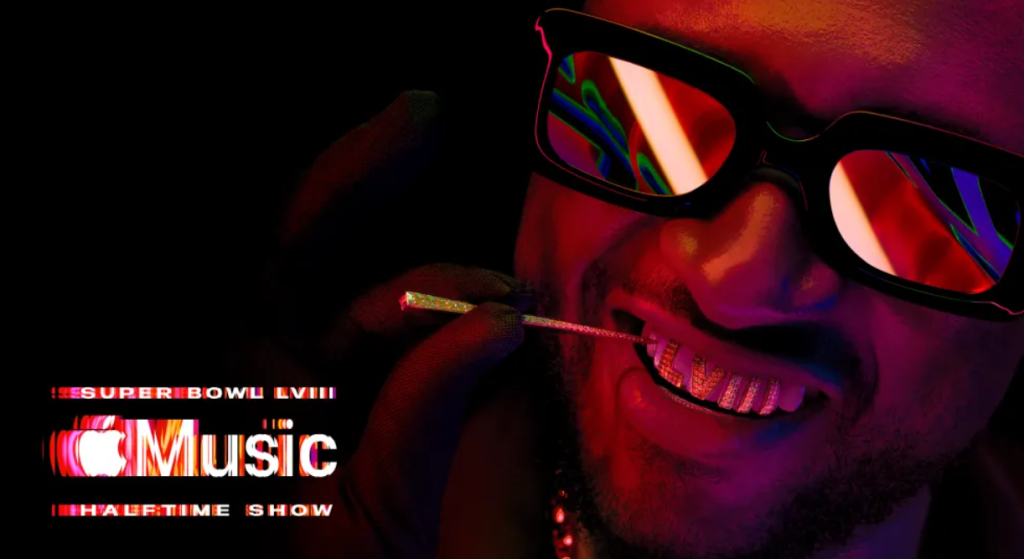
Why do artists choose to perform at the Super Bowl?
It’s a relatively little-known fact, but the artists who perform during the Superbowl halftime show do so pro bono. That’s right: pro bono. It may be a surprise in a record industry governed by big money that rakes in hundreds of millions of dollars yearly. But it’s not surprising at all.
Historically, artists participating in the Super Bowl significantly impact their streaming figures, record sales, network following, and other business metrics. Even the biggest stars, who are already famous, notice a before and after effect so much so that a fee for a fifteen-minute concert would be almost nothing compared to the proportional revenue generated by their presence. The Superbowl is so famous and well attended that today, there is no equivalent in media exposure.
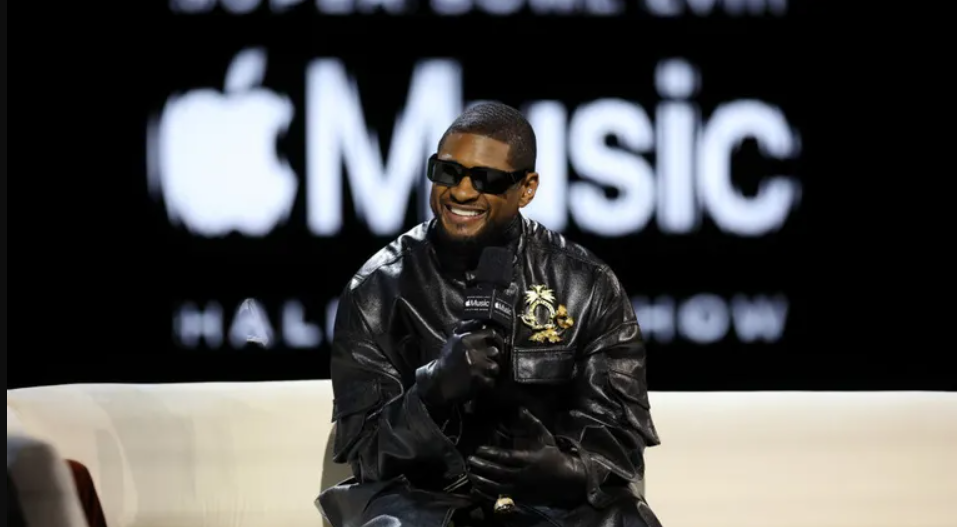
That’s why artists agree to perform for free. They know what they can earn afterward will be far more critical than a single fee. Monthly listeners will inevitably increase, as will concert attendance, which will eventually impact all the artists’ businesses outside of music, shining a light on the brands they have created. The Super Bowl feeds a virtuous circle.
But it hasn’t always been this way: it wasn’t until 1993 and Michael Jackson’s performance that the world turned its eyes to the Super Bowl halftime show and realized just how important it was. In 2015, Katy Perry swept all before her, and to this day is one of the most watched halftimes. The streaming repercussions are substantial and show just how much the Superbowl impacts global music beyond sport.
Five years later, Jennifer Lopez and Shakira followed suit, recording streaming gains of +267% and +187% respectively. And year after year, the figures get even more impressive.
2022’s halftime show : Super Bowl’s impact on streaming numbers
In February 2022, the show featured Dr. Dre, Snoop Dogg, Eminem, Mary J. Blige, Kendrick Lamar 50 Cent, and Anderson .Paak became the fifth most-viewed show in the history of the NFL YouTube channel in just a few hours. Meanwhile, Dr. Dre, Snoop Dogg, and Eminem are all in the top 5 most shazamed artists on Shazam. The Super Bowl’s impact on streaming numbers is significant!
This means the Superbowl also brings a different, perhaps younger, audience to already established artists. The halftime show at the NFL finals is not just a time-limited opportunity; it can also encourage discovery and give new impetus to careers. This, of course, has a significant impact on streaming statistics.

All 2022 artists are seeing an increase in their numbers on the platforms. Mary J. Blige’s “Family Affair” is estimated to have grown by +176%, while Dr. Dre and Eminem’s “Forgot About Dre” jumped +175% compared to pre-Superbowl figures. Kendrick Lamar’s “Alright” did the same: +200%. The most significant performance came from Dr. Dre’s best-known song, “Still Dre.” A good +261% was recorded on Spotify alone, corresponding to an average of two million listens per day during the week following the Superbowl.
Long-term effects of the Super Bowl’s impact on streaming numbers
A few days after the Superbowl, which brought together Dr. Dre, Snoop Dogg, Mary J Blige, Eminem, 50 Cent, and Kendrick Lamar, Deezer conducted a study to measure the impact of this performance on the streaming platform. The results are not surprising but impressive nonetheless.
What’s interesting is that streams don’t just increase after Superbowl performances but also before and during concerts. When names are announced, for example. In 2024, Usher saw an almost immediate increase in streams when it was revealed at the end of 2023 that he would be performing.
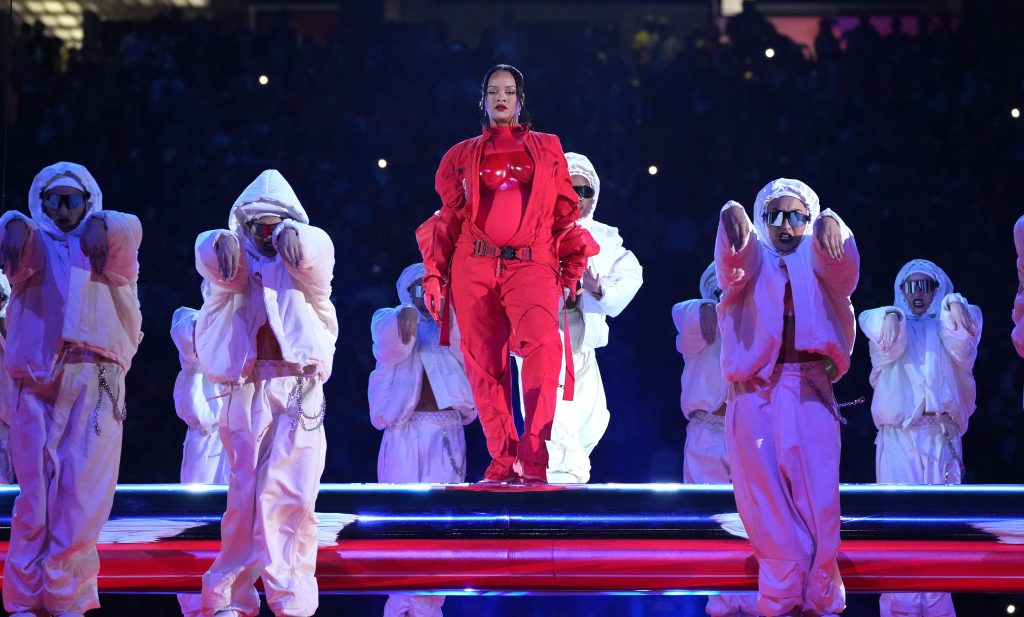
In 2018, Justin Timberlake saw his streams increase by +122% on the day of his performance, as did Mary J Blige, at +92%, and Snoop Dogg, at +65% in 2022. Deezer also reveals that, on average, artists who perform during the Superbowl halftime show see a +42% increase in their stats on Deezer during the week following their performance.
Impressive, isn’t it? In 2023, the trend continues.
Rihanna: massive earnings
In 2023, Rihanna once again exploded in the face of the world. After months of silence, her performance was eagerly awaited, and her every move was commented on. The previous year, in September, when her appearance at the Super Bowl was announced, three of her songs crossed the billion-stream mark on Spotify.
Her concert was almost universally celebrated; logically, her streaming figures surged ahead. According to Variety, her streams on Spotify rose by 640% in the four hours following her concert. Her digital album sales climbed by 301%, while digital song sales exploded by 390%.
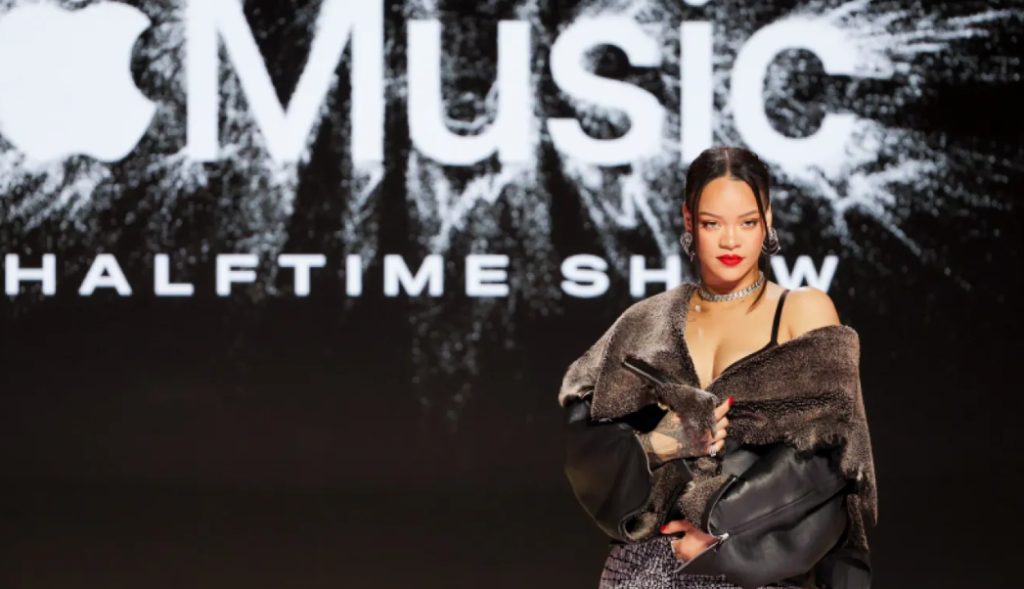
Her song “B*tch Better Have My Money” is the most streamed by far, with an increase of +2600%. You read that right: +2600%. These figures seem so enormous as to be unreal.
CBS News adds: “The singer’s entire setlist got new traction, with the 12 songs performed at the Big Game selling 27,000 downloads on Sunday and Monday, up 976% from two days earlier.”
Usher in 2024: Super Bowl’s impact on streaming
Usher’s figures for 2024 follow the same trend as his predecessors. On Spotify, his streams increased by +550% in the USA after his concert, where he played a medley of some of his classics, all of which benefited from this exposure. “Caught Up”: +2000%. “My Boo”, with Alicia Keys: +690%. “Yeah,” with Lil Jon and Ludacris: +520%. Its monthly listeners were also affected, rising from 37,580,867 to 39,484,096.
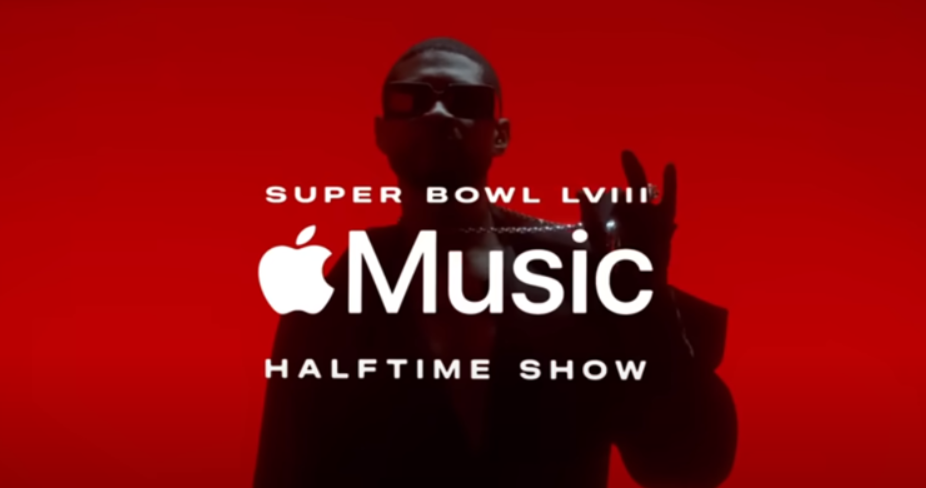
All this comes at a time when Apple Music has partnered with Usher and the Super Bowl to maximize the reach of the singer’s streams and promotional campaign. Apple Music has had its hands on the Super Bowl for two years.
Apple Music’s involvement
In 2022, Apple Music became the official sponsor of the Super Bowl, taking over from Pepsi, which had been the official sponsor for the previous ten years. And to say the least, Apple Music has yet to do things by halves. Apple’s ambition is certainly to create the event at the moment and exploit this commercial opportunity before and after halftime by maximizing the content created around the programmed artist.
“We’re trying to extend the campaign to more than just a show on a Sunday afternoon,” confirms Oliver Schusser, vice president of Apple Music and Beats.
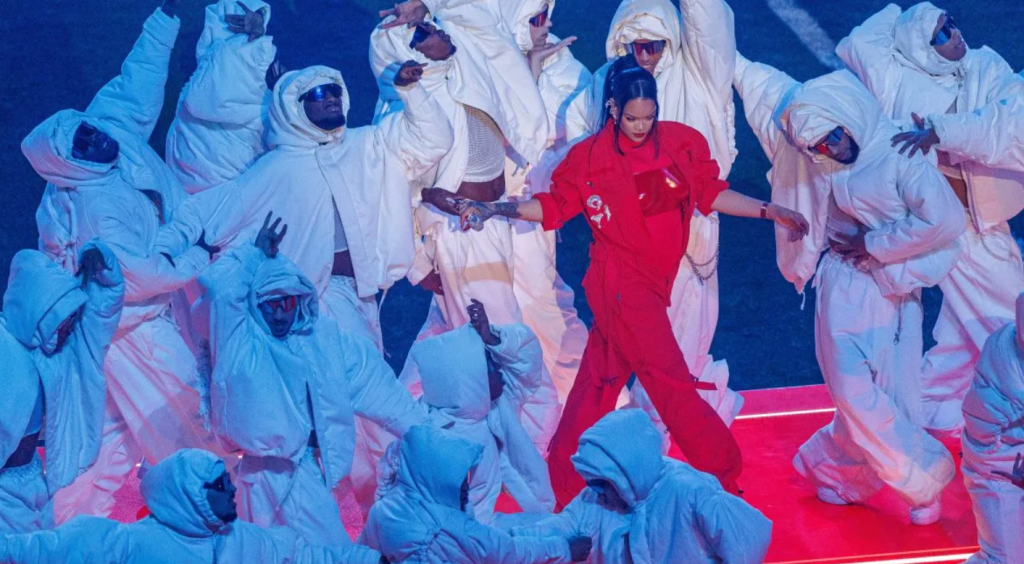
In 2022, Rihanna will benefit from a major promotional campaign. In anticipation of her performance, the singer’s entire catalog is made available in the Spatial Audio option with Dolby Atmos. But they don’t stop there. Apple Music Radio sets up an exclusive interview with the singer. A “Rihanna Revisited Radio” program is created, tracing Rihanna’s cultural impact in eight episodes.
A growing ecosystem
In addition to content designed for Rihanna, Apple Music produces a ten-episode podcast devoted to the most memorable halftimes in Superbowl history. Live broadcasts are organized on Apple Music Radio, with guests discussing the upcoming event, and playlists are created for the occasion. They combine the songs NFL players listen to when they work out, before their games, and on game day. American soccer players are also asked by Apple Music to create unique playlists.
In 2024, Usher also received special attention from Apple Music. Their collaboration had been in the works for several months. Several interviews and a program summarizing the history of Usher’s career in twenty songs are conducted. Apple Music Radio also programs moments where Usher takes control of a show, creates podcast episodes chronicling his evolution from emerging artist to superstar, and sets up promotional campaigns. All this is to build anticipation around his Super Bowl halftime concert and in parallel with the release of a new album.
It sounds like a well-oiled marketing campaign, as Tor Myhren, vice president of marketing communications at Apple, confirms: “From a marketing standpoint, we approach it like a product launch. You have all the unique things about it, so bring those to life. With Usher, the approach is that Usher is fun. Usher is a party. He wants to have a good time. It’s really about capturing the essence of that artist, putting that together with the essence of Apple Music.”
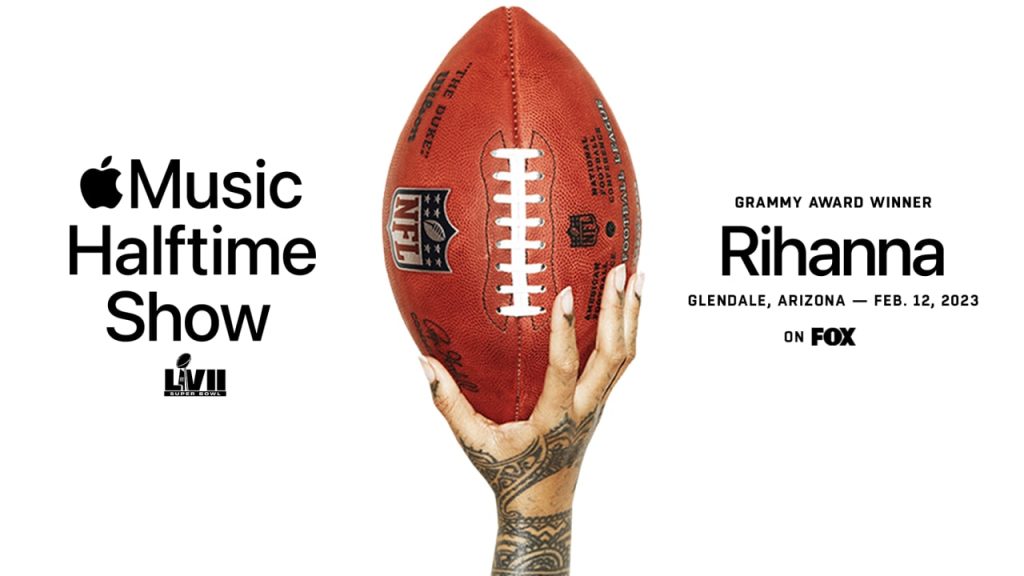
In 2025, Apple Music should again be at the forefront, and there’s no doubt they’ll rise to the occasion again. Soundiiz will be there to decipher it all.
But in the meantime, how can you make the most of your Apple Music subscription?
How to make the most of Apple Music using Soundiiz?
Once you’ve signed up to Apple Music, you can extend your streaming experience with Soundiiz. We work hand in hand with the streaming platforms to offer you the best possible user experience. And yes, our services are 100% legal because we don’t download or retrieve any audio files.

Once your Apple Music account is connected to your Soundiiz account, you can delete and update multiple playlists and manage everything in one place. You can keep your playlists up to date and never out of date.
And don’t worry if you’ve already subscribed to Spotify, Deezer, or YouTube Music. One thing that holds many people back in their decision to switch streaming platforms is the fear of losing data (playlists, favorite songs, etc.) accumulated over the years on their old streaming service.
Soundiiz allows you to avoid the embarrassing situation of arriving on Apple Music and starting from scratch. Building up a library of artists, songs, albums, or playlists… Wouldn’t that be frustrating?
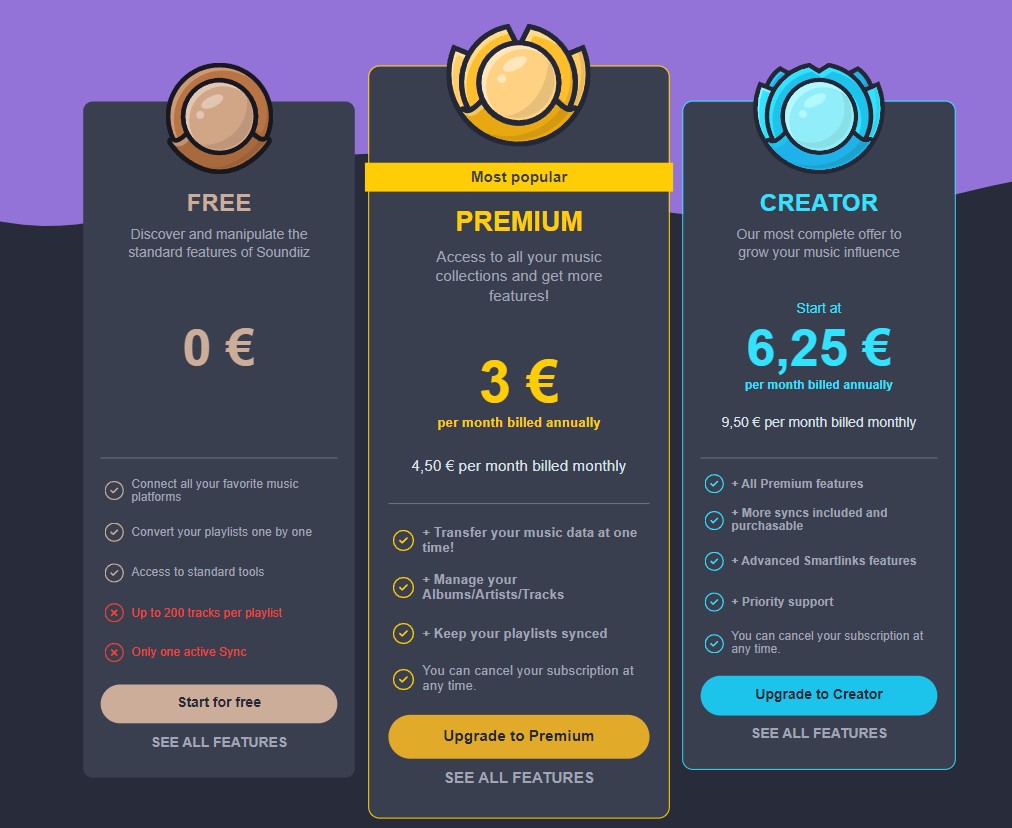
With Soundiiz, you can find all your Spotify, Deezer, TIDAL, YouTube Music, and other data directly in your Apple Music account in just a few seconds.
How does it work? It’s easy! You can use our Transfer function.
There you go: subscribe to Apple Music and import your data using Soundiiz!

